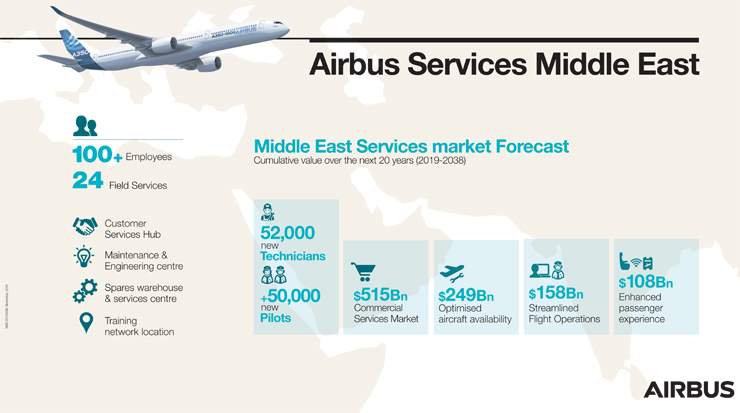This includes 750 small category aircraft like the Airbus A320 and Airbus A321, and 980 medium and large aircraft like the Airbus A330neo and Airbus A350 serving the UAE market in the next two decades; this as UAE origin and destination passenger traffic is forecast to grow 5,8 percent per annum over the next 20 years.
In the wider Middle East region, air passenger traffic is forecast to grow at a rate of 5,6 percent per year, which is well above the global average of 4,3 percent per annum.
Over the same period, global freight traffic will see an annual increase of 3,6 percent in line with the average global freight traffic growth. This will stimulate a requirement for some 3,200 aircraft out of a global requirement of 39,210 new passenger and freight aircraft.
Today, five of the world’s aviation mega cities are in the Middle East, with two, Dubai and Abu Dhabi, within the UAE. These will more than double to eleven over the next 20 years, to include such cities as Muscat and Kuwait City.









